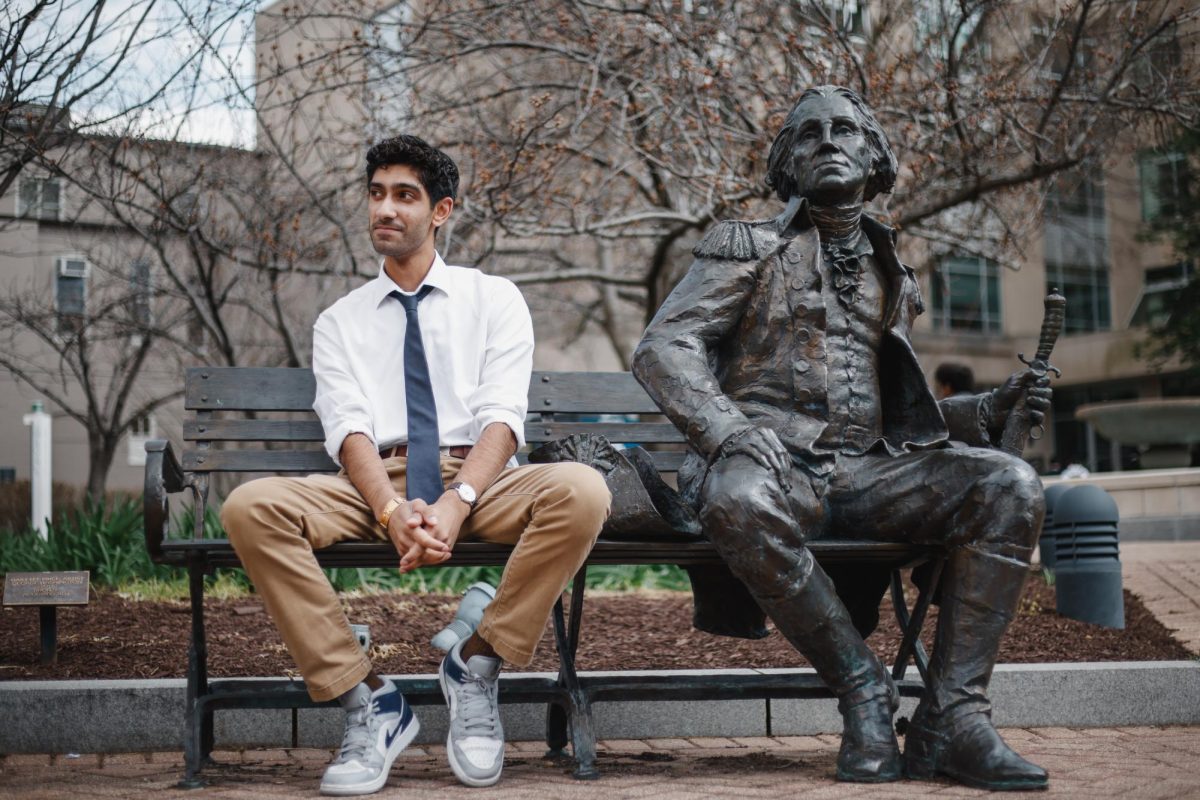A faculty committee will collect information on GW’s areas of improvement and develop recommendations for the University’s strategic plan over the next two months, officials announced earlier this month.
The 18 members of the Innovation Committee, appointed on Oct. 2, are tasked with collecting information from the GW community to identify opportunities for growth to include in the strategic plan and drafting a report summarizing their findings for officials by the end of fall 2024. Ethan Porter, an associate professor of media and public affairs and political science and a member of the committee, said he joined the strategic framework process because it is a “pivotal moment” for the University.
Porter said the committee is at an “idea-gathering” stage and that members are actively brainstorming recommendations.
“Right now, the plan is for us to host multiple town halls later in the semester,” Porter said in an email.
The committee will research and review data for University “growth” areas and differentiation from peer institutions, gather input from the University community through town halls to ensure inclusivity and create recommendations that align with the framework’s four core themes — interdisciplinary research, improving student’s skills and perspectives, making students future leaders in the workforce and working with government and other organizations to enhance public policy — according to a letter from University President Ellen Granberg to the committee on Oct. 2.
After the Innovation Committee submits its recommendations to officials at the end of the semester, a Steering Committee — the members of which are still being appointed — will review and assess the Innovation Committee’s recommendations in the spring, according to the strategic framework website. Porter said he has no information yet on the Steering Committee.
He said faculty are the “long-term guardians” of the University and that their input is “essential” in the strategic framework.
“The Committee will generate ideas, and will canvass the community for their input, before turning things over to a Steering Committee,” Porter said.
Four faculty members on the committee declined to comment on what they wish to contribute to the committee and how they hope the committee guides the strategic framework. Eight other faculty members did not return a request for comment.
In September, Granberg announced the launch of the formulation of the strategic plan, which included updates for the development of a timeline and the four core themes the plan would center around.
Granberg announced the launch of the creation of a new strategic framework in February by holding a series of discussions with students, faculty, staff and alumni to inform the strategic plan. Provost Chris Bracey released a report of feedback in April from those conversations, which stated that community members recommended that the University should capitalize on its location in the District, develop a curriculum to address artificial intelligence and other workforce challenges, prepare students with skills for the job market, increase affordability and access to classes and leverage its alumni base.
The University has been without a strategic plan since 2020 when officials deemed former University President Thomas LeBlanc’s plan “obsolete” due to the COVID-19 pandemic and its lack of community input. The development of LeBlanc’s plan included appointing four committees to develop the plan to present to the Board of Trustees in February 2020.
LeBlanc announced in 2019 that as part of the plan, GW would attempt to have 30 percent of its undergraduate population pursuing STEM-related degrees in order to compete with other universities and that the University would decrease the number of undergraduate students by 20 percent over five years after feedback received from the GW community. Humanities and social science faculty voiced concern that the potential increase in STEM students could result in a decrease in funding for non-STEM programs.
After LeBlanc retired in 2021, officials decided to wait until the permanent appointment of a new president to begin the strategic planning process again.





